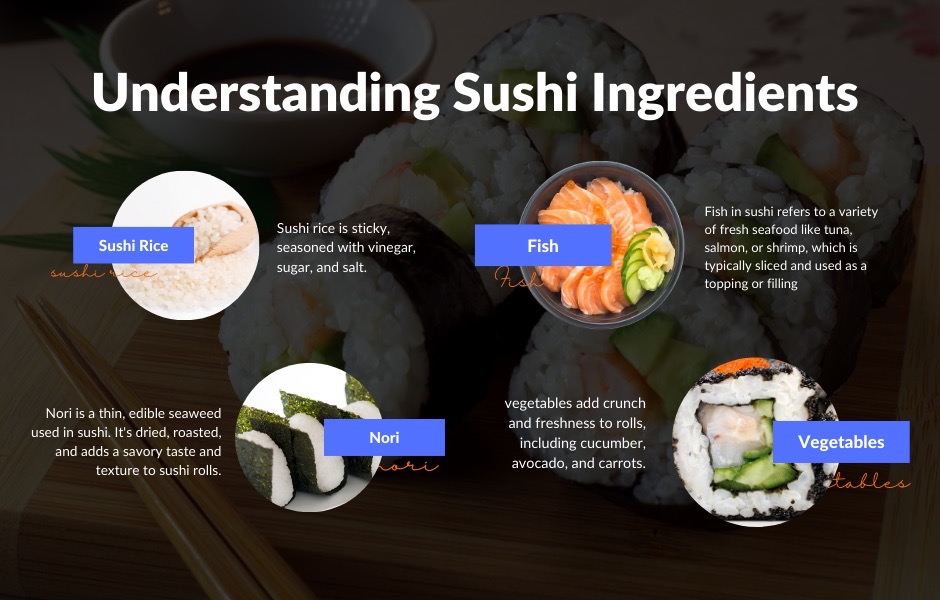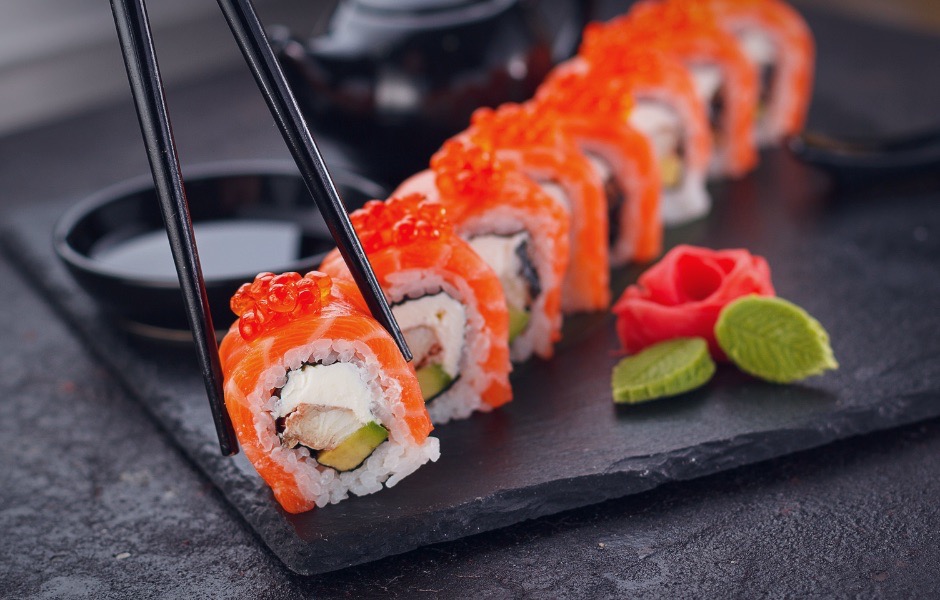Embarking on the journey of sushi-making can feel like stepping into a new world, a world filled with tradition, culture, and a devotion to culinary artistry. Sushi Roll, a globally celebrated dish, is more than just a combination of rice and fish—it’s a testament to Japanese culinary heritage, reflecting the beauty of simplicity and harmony in each bite. If you’re in Dubai and interested in exploring this art form, consider joining cooking classes in Dubai
In this blog, we’ll demystify the art of sushi-making and guide you through the process of crafting your first sushi roll.
The History of Sushi
Sushi’s journey began centuries ago, not in Japan, but in Southeast Asia. It initially served as a method of preserving fish, encased in fermented rice. As this preservation technique travelled, it reached Japan, where it underwent a remarkable evolution.
Over time, the fermented rice was replaced with vinegared rice, and the preservation method transformed into a culinary art form we now know as sushi. Sushi’s global influence cannot be overstated—it has been embraced and adapted to local tastes worldwide, contributing to its popularity.
Understanding Sushi Ingredients

As with any culinary creation, the quality of your ingredients can make or break your sushi. The main components of sushi are sushi rice (short-grained rice seasoned with a blend of vinegar, sugar, and salt), nori (thin sheets of dried seaweed), and fillings (which can range from raw fish to vegetables).
Choosing fresh, quality ingredients is paramount. For fish, opt for sushi-grade varieties—tuna, salmon, or yellowtail are common options. Your choice of vegetables can include avocado, cucumber, or pickled radish, among others. As for the condiments, wasabi, soy sauce, and pickled ginger are typical accompaniments. The careful selection and combination of these ingredients play a significant role in creating a sushi roll that’s a delight to the senses.
Essential Tools for Making Sushi in Dubai: A Must-Have for Every Sushi Enthusiast
Making sushi requires some essential tools like a sushi mat, a sharp knife, and a rice cooker. If you’re looking for a place to learn how to use these tools, consider joining cookery classes in Dubai or online cooking classes.
These cooking courses in Dubai can provide you with the necessary skills and knowledge to make your sushi-making experience a breeze. Whether you’re a beginner or an experienced chef, these chef courses in Dubai can help you master the art of sushi-making.
Step-by-Step Guide to Making Your First Sushi Roll

Creating sushi is like a performance art, with each step leading to the climactic bite. Let’s take the stage together, crafting a beautiful symphony of sushi. This recipe will yield 8 pieces of sushi, perfect for a beginner.
Ingredients for 8 pieces of sushi:
- 1 cup sushi rice
- 1 1/2 cups water
- 2 tablespoons rice vinegar
- 1 tablespoon sugar
- 1/4 teaspoon salt
- 1 sheet of nori
- 2 ounces sushi-grade tuna
- 1/4 cucumber
- 1/4 avocado
Tools Needed:
- Bamboo sushi mat
- Sharp knife
- Rice cooker
- Bowl of water for dipping hands
Steps:
- Preparing the sushi rice: Measure out 1 cup of sushi rice. Place it in a fine-mesh sieve and run it under cold water. Rinse the grains until the water runs clear. This step removes excess starch, ensuring a perfect sushi rice. Add the rinsed rice and 1 1/2 cups of water into a rice cooker. Close the lid and switch it on. Generally, this process takes about 20 minutes.
- While the rice is cooking, it’s time to prepare the sushi vinegar. In a small saucepan, combine 2 tablespoons of rice vinegar, 1 tablespoon of sugar, and 1/4 teaspoon of salt. Set the heat to medium and stir the mixture until the sugar and salt dissolve. Remove from heat and let it cool.
- Once your rice cooker signals that the rice is done, take a moment to appreciate the fragrant, steamy rice. Transfer it to a large bowl. Drizzle the cooled sushi vinegar over the rice. Use a wooden spatula to gently fold the vinegar into the rice, ensuring each grain is coated. Let the rice cool to room temperature.
- Preparing the fillings: Slice your 2 ounces of sushi-grade tuna into thin, elegant strips. Cut the 1/4 cucumber and 1/4 avocado into similar shapes, about the length of the shorter side of the nori sheet. Each slice should be thin enough to roll but substantial enough to contribute to the texture and flavor of the sushi.
- Assembly of sushi roll: Here’s where your culinary performance starts to take shape. Place your nori sheet on the bamboo sushi mat. Wet your hands in the bowl of water. This is a sushi chef’s trick to keep the rice from sticking to your hands. Grab a handful of sushi rice and gently spread it over the nori, leaving about an inch of space at the top.
- Arrange your orchestra of flavors—the tuna, cucumber, and avocado—on the rice, about 1/3 from the bottom of the nori sheet closest to you. Imagine the harmony of tastes each bite will provide.
- Rolling the sushi: Now, let’s bring the performance to its peak. Lift the edge of the mat closest to you, folding it over the fillings while applying gentle pressure to keep the roll tight. Continue rolling, guiding with the mat, until you reach the end. Moisten the free edge of the nori with a bit of water, sealing your masterpiece.
- Cutting the sushi roll: Here’s the moment of reveal. Wet the blade of your sharp knife. This will prevent sticking and ensure a clean cut. Slice the sushi roll into 8 equally sized pieces, using a gentle sawing motion to maintain its shape.
- Serving the sushi roll: Arrange your sushi pieces on a plate like notes on a music sheet. Accompany your sushi symphony with a small mound of wasabi, a side of pickled ginger, and a small dish of soy sauce for dipping.
Now comes the finale of your performance. Pick up a piece of sushi with your chopsticks, dip it lightly in soy sauce, and then take a bite. Close your eyes and savor the harmonious medley of flavors. The gentle tang of the vinegar-infused rice, the tender bite of tuna, the crisp, refreshing cucumber, and the creamy richness of avocado—all wrapped in a salty whisper of nori.
Remember, like any art, the art of sushi-making requires practice. Your first roll might not be perfect, but don’t be discouraged. Each roll is an opportunity to refine your technique, to adjust the balance of flavors to your liking, and to experiment with different fillings.
Keep precising, keep experimenting, and most importantly, keep savoring. The world of sushi is rich and diverse, and this is just the first step in your journey. So here’s to many more delicious adventures in your sushi-making journey!
Tips and Tricks for Better Sushi Roll
There are many tips and tricks to making better sushi, like using fresh ingredients and rolling the sushi tightly. If you’re interested in learning these tips and tricks, consider joining the best cooking classes in Dubai or healthy cooking classes Dubai.
These cooking classes can provide you with the necessary skills and knowledge to make your sushi-making experience a breeze. Whether you’re a beginner or an experienced chef, these cooking classes in Dubai can help you master the art of sushi-making.
Here are a few tips to enhance your sushi-making journey:
- Be mindful of the rice temperature. Sushi rice should be used when it’s at room temperature. Using hot rice can result in a mushy texture, while cold rice can be hard to shape.
- Don’t overfill your sushi roll. It might be tempting to add a lot of fillings, but it will make the rolling process more difficult and might result in an unbalanced flavor profile.
- Keep your hands and knife wet. This will prevent the rice from sticking and make the cutting process smoother.
- Practice makes perfect. Your first few attempts might not yield perfect results, but don’t be discouraged. Each time you make sushi, you’ll learn more and improve.
Exploring Further into the World of Sushi Roll
Once you’ve mastered the basics, you can explore further into the world of sushi. From different types of sushi to advanced techniques, there’s always more to learn.
Consider joining Indian cooking classes in Dubai or baking classes in Dubai to expand your culinary skills. These cooking courses in Dubai can provide you with the necessary skills and knowledge to make your sushi-making experience a breeze.
Whether you’re a beginner or an experienced chef, these cooking classes in Dubai can help you master the art of sushi-making.
Lastly: Reflecting on Your Sushi-Making Journey
After making your first sushi roll, take some time to reflect on your sushi-making journey. What did you learn? What would you do differently next time? And most importantly, how did it taste? Remember, the journey is just as important as the destination.
And in this case, the destination is a delicious sushi roll made by you. If you’re looking for more cooking classes near me or baking classes near me, check out Pursuit today!
FAQs
1. What kind of rice is best for sushi?
Short-grain Japanese rice, sometimes labelled as sushi rice, is the best choice due to its sticky texture when cooked.
2. Can I use any type of fish for sushi?
Not all fish are suitable for sushi, especially if you’re serving it raw. Always opt for sushi-grade fish, which ensures it’s safe for raw consumption. Common choices include tuna, salmon, and yellowtail.
3. Is sushi healthy?
Sushi can be a nutritious meal option as it contains high-quality proteins, healthy fats from fish, and fibre from vegetables. However, it’s important to consume in moderation due to the sodium content in soy sauce and potential mercury in some fish.
4. How can I make vegetarian/vegan sushi?
Vegetarian and vegan sushi can be made using a variety of ingredients such as cucumbers, avocados, pickled radish, bell peppers, and even tofu. The key is to ensure the ingredients provide a balanced flavor profile.
5. How do I store leftover sushi?
Sushi is best consumed immediately after it’s made. However, if you have leftovers, wrap them tightly in plastic wrap and refrigerate. Consume within 24 hours, and always check the quality before eating.
If you’re interested in learning more about sushi-making, consider joining cooking classes online or chef courses in Dubai. These classes can provide you with the necessary skills and knowledge to make your sushi-making experience a breeze.
Whether you’re a beginner or an experienced chef, these cooking classes in Dubai can help you master the art of sushi-making.






Leave a Reply